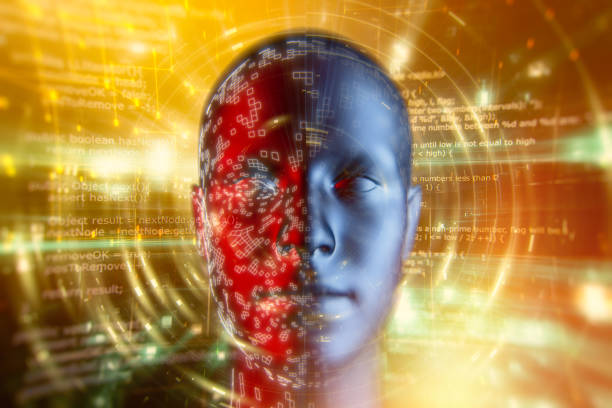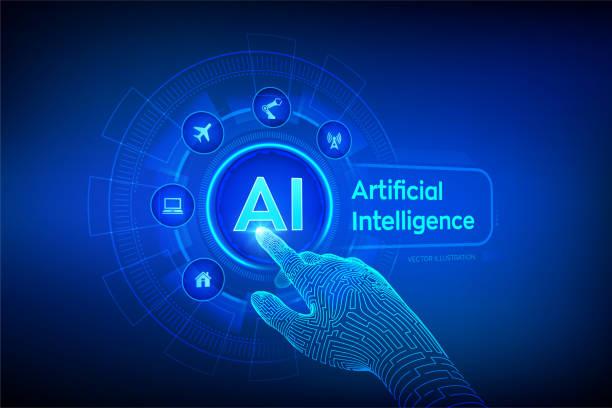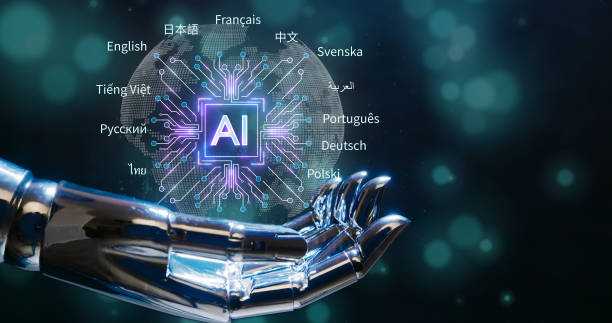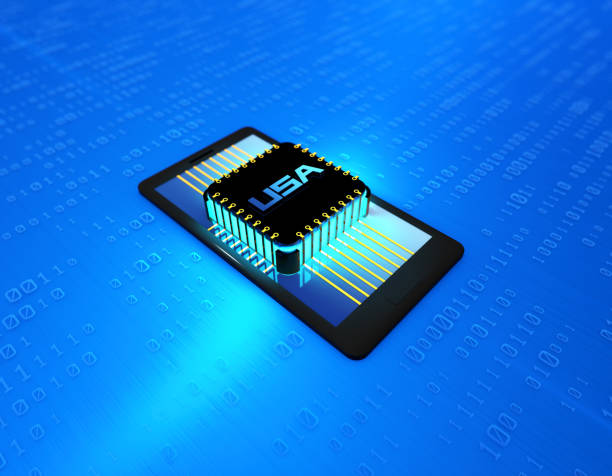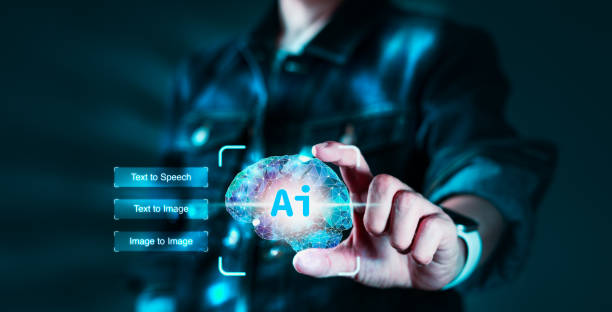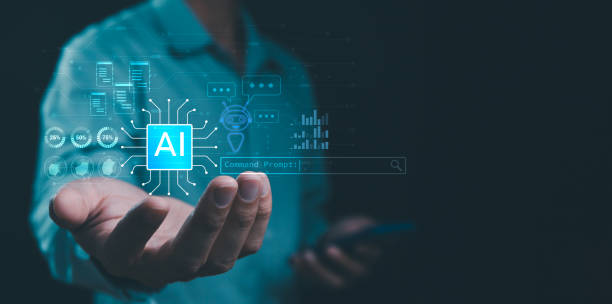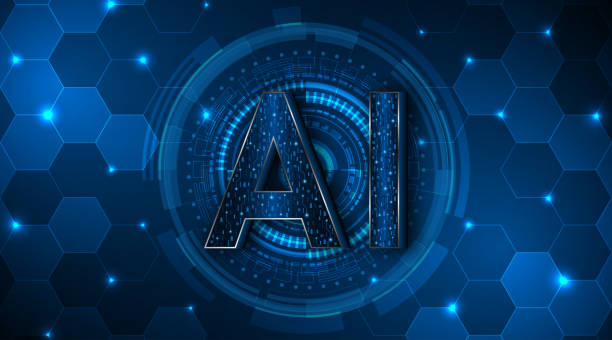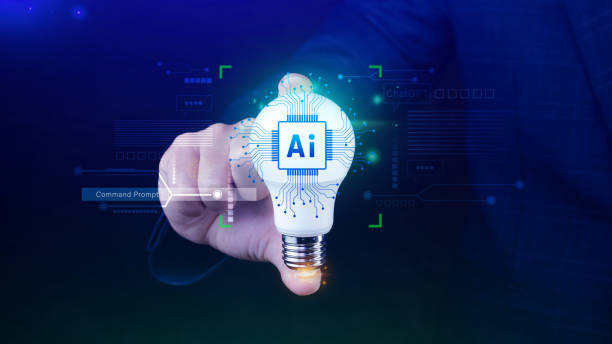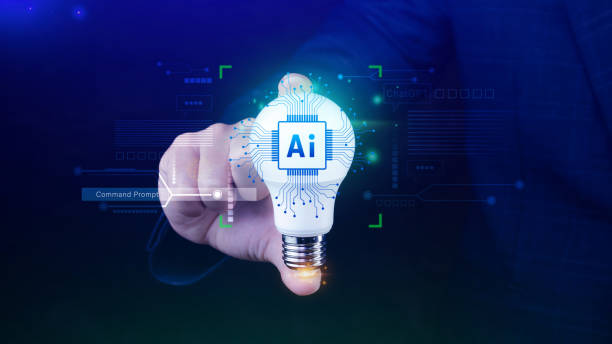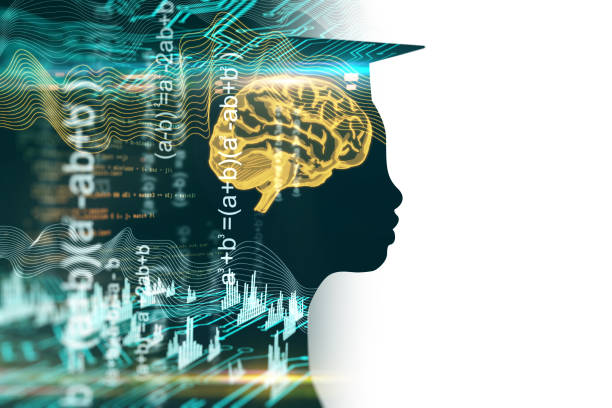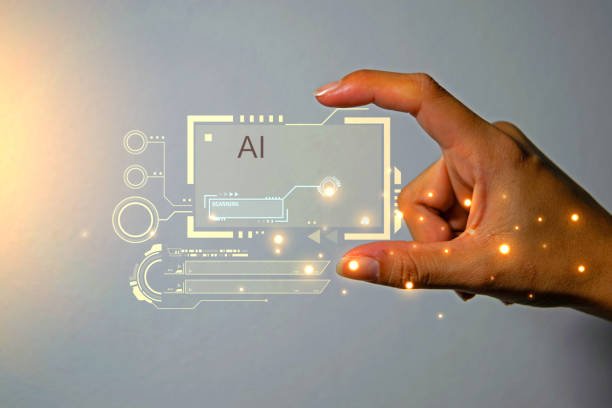What is an Artificial Intelligence Robot and How Does it Work?
An artificial intelligence robot, sometimes referred to as an #AI_robot, is a combination of two advanced technology fields: robotics and artificial intelligence.
Robotics deals with the design, construction, operation, and application of robots, while artificial intelligence deals with the development of computer systems capable of performing tasks requiring human intelligence, such as learning, problem-solving, and decision-making.
Simply put, an artificial intelligence robot is a machine that is capable of performing complex tasks automatically using algorithms and artificial intelligence models.
These robots can be used in various environments, from factory production lines to virtual spaces.
The way an artificial intelligence robot works generally involves the following steps:
- Data acquisition: The robot collects information about its surroundings through various sensors (such as cameras, microphones, touch sensors, etc.).
- Data processing: The collected information is processed by an artificial intelligence system (such as deep neural networks).
This system can identify patterns, recognize objects, and understand the state of the environment. - Decision making: Based on the analysis of information, the artificial intelligence system decides what action should be taken.
This decision-making can be based on pre-defined rules or based on learning from data. - Execution: The robot executes the desired action using its actuators (such as motors, arms, wheels, etc.).
For example, an artificial intelligence robot used in a factory for packaging products can use a camera to identify the type of product, use a robotic arm to pick up the product, and place it in the appropriate box.
This process is completely automatic and without human intervention.
Artificial intelligence robots are capable of performing more complex tasks than simple programming.
For example, learning from experience.
This has made the artificial intelligence robot an efficient and essential tool in various industries.
For example, in the automotive industry, artificial intelligence robots are used in the production line for assembling parts, painting the body, and inspecting quality.
These robots can perform these tasks with high accuracy and speed, and help to increase productivity and reduce costs.
Does your company’s website create a professional and lasting first impression in the minds of potential customers? Rasaweb, with professional corporate website design, not only represents the credibility of your brand, but also opens a path for the growth of your business.
✅ Creating a powerful and reliable brand image
✅ Attract target customers and increase sales
⚡ Get free consultation
Diverse Applications of Artificial Intelligence Robots in Various Industries
The applications of artificial intelligence robots are very extensive and can be used in almost any industry.
Artificial intelligence robots can be used to perform repetitive, dangerous, or complex tasks.
Below, we point out some of the key applications of these robots in various industries:
- Production: Artificial intelligence robots are used in production lines for assembling parts, packaging products, quality control, and handling materials.
These robots can work with high accuracy and speed and help reduce errors and increase productivity. - Health and treatment: Artificial intelligence robots are used in surgery, rehabilitation, nursing patients, and pharmacy.
These robots can perform complex surgeries with high accuracy, help patients in rehabilitation, and discover new drugs. - Customer service: Artificial intelligence robots are used in contact centers, chatbots, and automated response systems to provide services to customers.
These robots can answer customer questions, solve their problems, and register their orders. - Agriculture: Artificial intelligence robots are used in agriculture for planting, maintaining, and harvesting crops.
These robots can plant seeds with high accuracy, eliminate weeds, and harvest crops. - Education: Artificial intelligence robots are used in education to provide personalized training, teach lessons, and assess students’ knowledge.
These robots can help students learn better and faster.
In addition, artificial intelligence robots have many applications in other industries such as logistics, mining, energy, security, and entertainment.
With the advancement of technology, it is expected that the applications of these robots will become more extensive in the future and play a more important role in human life.
Artificial intelligence robots significantly help to increase productivity, reduce costs, and improve the quality of life.
Artificial intelligence robots, due to their ability to learn and adapt to new conditions, can perform well in complex and unpredictable environments.
This feature has led to the use of artificial intelligence robots in space missions, rescue operations, and underwater explorations.
For example, in rescue operations, they can search for victims in dangerous conditions.
Advantages of Using Artificial Intelligence Robots
The use of artificial intelligence robots has numerous advantages that can help improve the performance of organizations and increase the quality of human life.
Some of the most important of these benefits are:
- Increased productivity: Artificial intelligence robots can work continuously and without fatigue, which leads to increased productivity and reduced task completion time.
- Cost reduction: Artificial intelligence robots can replace human labor and reduce the costs related to salaries, insurance, and training.
- Improved accuracy: Artificial intelligence robots can perform tasks with much higher accuracy than humans, which leads to reduced errors and increased quality of products and services.
- Increased safety: Artificial intelligence robots can work in dangerous and high-risk environments instead of humans, which leads to a reduction in injuries and financial losses.
- Improved quality of life: Artificial intelligence robots can help humans perform daily tasks and free up their time and energy for more important activities.
Click here to preview your posts with PRO themes ››
In addition, artificial intelligence robots can help collect and analyze data, which can help organizations make better and more informed decisions.
They can also help provide better and more personalized services to customers.
Artificial intelligence robots, given their capabilities, can be influential in various fields and lead to progress in various industries.
Here is a table to compare the performance of artificial intelligence robots and humans in some tasks:
| Task | Artificial Intelligence Robot | Human |
|---|---|---|
| Speed | Very High | Average |
| Accuracy | Very High | Variable |
| Fatigue | None | Present |
| Cost | High (Initial) | Average (Permanent) |
| Flexibility | Limited | High |
As can be seen in the table, artificial intelligence robots perform better than humans in speed and accuracy, but have limitations in flexibility.
Challenges Facing the Development of Artificial Intelligence Robots
Despite the many advantages, the development of artificial intelligence robots faces several challenges.
Some of these challenges are:
- High cost: The development and production of artificial intelligence robots requires high investment in research and development, equipment, and specialized workforce.
- Technical complexity: The design and construction of artificial intelligence robots requires high knowledge and expertise in various fields including robotics, artificial intelligence, electronics, and software.
- Ethical limitations: The use of artificial intelligence robots can create various ethical issues, including job losses, privacy, and security.
- Security concerns: Artificial intelligence robots can be hacked and used for malicious purposes.
- Legal limitations: Laws and regulations regarding the use of artificial intelligence robots are still under development and may create limitations for the use of this technology.
To overcome these challenges, we need cooperation between governments, organizations, researchers, and experts.
More investment should be made in research and development, ethical and security standards should be developed, and appropriate laws and regulations should be enacted.
Artificial intelligence robots have high potential to improve human life, but they must be used responsibly and considering all aspects.
Artificial intelligence robots are a major transformation in the field of technology and should be welcomed with awareness and preparation.
Another important challenge in the development of artificial intelligence robots is the issue of #cybersecurity.
Since these robots are connected to the Internet, they are exposed to cyberattacks.
Hackers can gain control of the robot by infiltrating the system and use it for malicious purposes.
Therefore, ensuring the cybersecurity of artificial intelligence robots is of utmost importance.
Are you losing business opportunities because of an old website? With Rasaweb, solve the problem of not attracting potential customers through your website forever!
✅ Attract more high-quality leads
✅ Increase brand credibility in the eyes of customers
⚡ Get a free corporate website design consultation
What Will the Future of Artificial Intelligence Robots Be?
The future of artificial intelligence robots looks very bright and promising.
With the advancement of technology, these robots are expected to become smarter, more powerful, and more flexible, and play a more important role in various areas of human life.
Some of the key trends in the development of artificial intelligence robots include:
- Deep learning: Using deep learning algorithms allows robots to learn from more data and perform more complex tasks.
- Natural language processing: Advances in natural language processing allow robots to communicate with humans more naturally and effectively.
- Machine vision: Advances in machine vision allow robots to better understand their surroundings and perform vision-related tasks.
- Internet of Things: Connecting robots to the Internet of Things allows them to communicate with other devices and share data.
- Human-robot collaboration: The development of collaborative robots allows humans and robots to work together and leverage each other’s capabilities.
In the future, artificial intelligence robots are expected to play a very important role in areas such as healthcare, education, transportation, manufacturing, and customer service.
Artificial intelligence robots can help improve the quality of human life, increase productivity, and reduce costs.
However, the ethical and security challenges related to the use of this technology must also be considered.
Artificial intelligence robots, as one of the most important technologies of the 21st century, have high potential to create positive changes in society.
It is predicted that in the near future, artificial intelligence robots will be able to understand and respond to human emotions.
This can create a big change in human-robot interactions.
Artificial intelligence robots, with their growing capabilities, are rapidly becoming an integral part of our lives.
Click here to preview your posts with PRO themes ››
How to Choose the Right Artificial Intelligence Robot
Choosing the right artificial intelligence robot requires considering various factors.
First of all, you need to accurately identify your needs.
What tasks do you want the robot to perform? In what environment will you use it? What budget have you allocated for purchasing the robot? After answering these questions, you can start researching the different types of artificial intelligence robots.
Some of the key factors to consider when choosing an artificial intelligence robot include:
- Performance: The robot should be able to perform your desired tasks with high accuracy and speed.
- Reliability: The robot should be reliable and work consistently and without problems.
- Flexibility: The robot should be able to adapt to environmental changes and learn new tasks.
- Cost: The cost of the robot should match your budget.
- Support: The robot manufacturer should provide adequate support services.
In addition, you should also pay attention to the specific features of the robot.
For example, if you want to use the robot in a dangerous environment, you should choose a robot that is resistant and safe.
If you want to use the robot to interact with customers, you should choose a robot that has natural language processing capabilities.
By carefully choosing an artificial intelligence robot, you can fully benefit from this technology and help improve your organization’s performance.
Artificial intelligence robots are a powerful tool that can help you with various tasks, but they should be chosen carefully and consciously.
For a better choice, it is best to consult with experts in this field.
Experts can suggest the best option for you based on your needs.
Artificial Intelligence Robots and Employment: Will Robots Replace Humans?
One of the main concerns about artificial intelligence robots is their impact on employment.
The question is, will robots replace humans in the labor market? The answer to this question is complex and depends on various factors.
On the one hand, artificial intelligence robots can perform repetitive and tedious tasks, which can lead to job losses.
On the other hand, artificial intelligence robots can also create new job opportunities.
For example, there is a need for skilled workforce to design, build, maintain, and repair robots.
In addition, artificial intelligence robots can increase productivity and contribute to economic growth, which can lead to the creation of more jobs.
Overall, it seems that artificial intelligence robots will change the structure of the labor market, but will not necessarily lead to job losses.
Humans need to learn new skills to be able to work alongside robots and leverage their capabilities.
One of the most important skills that humans should acquire is problem-solving and critical thinking.
Robots can perform repetitive tasks well, but in solving complex problems that require creative thinking, humans still have the advantage.
| Skill | Importance in the Future | Description |
|---|---|---|
| Problem solving | Very High | Ability to identify and solve complex problems |
| Critical thinking | Very High | Ability to analyze information and evaluate arguments |
| Creativity | High | Ability to create new and innovative ideas |
| Collaboration | High | Ability to work effectively with others |
| Technical skills | Average | Knowledge and skills needed to work with robots and artificial intelligence systems |
Ethical Issues Related to Artificial Intelligence Robots
The development and use of artificial intelligence robots raises various ethical issues.
One of the most important of these issues is the issue of accountability.
If an artificial intelligence robot causes damage, who is responsible? The manufacturer, the user, or the robot itself? The answer to this question is not easy and requires careful discussion and examination.
Another issue is the issue of privacy.
Artificial intelligence robots can collect a lot of information about humans, which can be misused.
Therefore, laws and regulations should be enacted to protect people’s privacy against artificial intelligence robots.
In addition, artificial intelligence robots can cause discrimination.
For example, if an artificial intelligence robot is used to hire people, it may inadvertently create gender or racial discrimination.
To prevent this problem, artificial intelligence algorithms should be designed to be fair and non-discriminatory.
In general, ethical issues related to artificial intelligence robots are very complex and broad and require careful attention and review.
Ethics experts, philosophers, and legislators should work together to provide solutions to these issues.
Artificial intelligence robots have high potential to improve human life, but they must be used responsibly and with consideration for all ethical aspects.
Artificial intelligence robots should be designed to respect human values and act in the interest of society.
This requires the development of specific ethical and legal standards for the development and use of artificial intelligence robots.
Are you worried about losing customers who don’t have a professional online store website?
Forget those worries by designing an online store website with Rasaweb!
✅ Significant increase in sales and conversion rate of visitor to customer
✅ Professional and user-friendly design that builds customer trust
⚡ Get a free consultation from Rasaweb
How Can We Prepare for a Future with Artificial Intelligence Robots?
To fully benefit from the advantages of artificial intelligence robots and prevent their potential risks, we must prepare for a future with artificial intelligence robots.
Some of the key strategies for this preparation include:
- Learning new skills: We must learn skills that robots cannot easily replace, such as problem-solving, critical thinking, creativity, and communication skills.
- Adaptability: We must be flexible and able to adapt to constant changes in technology.
- Education: Education systems should be designed to prepare students for working alongside robots.
- Legislation: Governments should enact appropriate laws and regulations for the use of artificial intelligence robots to protect privacy, security, and social justice.
- Collaboration: Experts, governments, organizations, and individuals should work together to provide solutions for the responsible and ethical use of artificial intelligence robots.
Click here to preview your posts with PRO themes ››
By preparing for a future with artificial intelligence robots, we can use this technology as a tool to improve human life and advance society.
Artificial intelligence robots should not be seen as a threat to humans, but as an opportunity for collaboration and progress.
One of the most important actions that can be taken to prepare is to increase public awareness about artificial intelligence robots.
Many people still do not have enough information about this technology and may have unnecessary concerns.
By raising public awareness, we can help reduce these concerns and pave the way for better acceptance of artificial intelligence robots in society.
Summary and Conclusion
In this article, we examined various aspects of artificial intelligence robots.
We saw that this technology has high potential to improve human life and advance society, but at the same time poses numerous ethical and security challenges.
To fully benefit from the advantages of artificial intelligence robots and prevent their potential risks, we must prepare for a future with artificial intelligence robots.
This preparation requires learning new skills, adaptability, appropriate education, accurate legislation, and collaboration between experts, governments, organizations, and individuals.
Artificial intelligence robots are a major transformation in the field of technology and should be welcomed with awareness and preparation.
We should look at artificial intelligence robots as an opportunity for collaboration and progress, not as a threat to humans.
By using artificial intelligence robots responsibly and ethically, we can create a brighter and better future for ourselves and future generations.
Finally, let’s remember that artificial intelligence robots are a tool in the service of humans, and their destiny is in our hands.
Frequently Asked Questions
| Question | Answer |
|---|---|
| What is an artificial intelligence robot? | It is a robot that uses the capabilities of artificial intelligence to understand the environment, reason, learn, and make decisions to perform complex tasks independently. |
| What is the main difference between a regular robot and an artificial intelligence robot? | Artificial intelligence robots can learn and adapt to their environment, while regular robots usually operate based on fixed and pre-determined programming. |
| In what areas are artificial intelligence robots used? | In areas such as industry (production lines), medicine (robotic surgeries), services (customer support, smart vacuum cleaners), exploration (space and underwater), and entertainment. |
| How do artificial intelligence robots learn? | They acquire new skills through machine learning (ML) and deep learning algorithms, by analyzing large amounts of data and identifying patterns. |
| Can artificial intelligence robots have emotions? | Currently, no. They can identify or simulate emotions, but they do not have the real experience of emotions like humans. |
| What are the most important advantages of using artificial intelligence robots? | Increased productivity, reduced human error, performing dangerous or repetitive tasks, and providing innovative and efficient services. |
| What challenges are there in the development of artificial intelligence robots? | The need for large amounts of high-quality data, the complexity of algorithms, ethical issues, cybersecurity, and the high cost of research and development. |
| Are artificial intelligence robots dangerous to humans? | By following safe design principles and ethical regulations, no. Concerns are more related to social and economic impacts such as changes in the labor market. |
| What is an example of an artificial intelligence robot in everyday life? | Smart vacuum cleaners (such as Roomba) that automatically map and clean the house, or smart voice assistants (such as Siri and Alexa). |
| How is the future of artificial intelligence robots predicted? | They are expected to become smarter, more autonomous, and capable of more complex interaction with humans and play a more prominent role in
|

